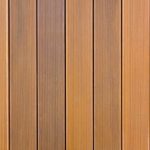Have you ever wondered how to make a tack cloth for woodworking? Tack cloths are an essential tool for any woodworker, as they help to remove dust and debris before applying finishes such as paint or varnish.
In this article, we will explore the purpose and importance of using a tack cloth in woodworking, as well as provide a step-by-step guide on how to make your own tack cloth at home. Whether you’re a beginner or an experienced woodworker, understanding and utilizing tack cloths can significantly improve the quality of your woodworking projects.
Before we dive into the process of making a tack cloth, it’s important to understand what a tack cloth is and its role in the woodworking process. Tack cloths are sticky pieces of cheesecloth that are used to pick up and remove fine particles of dust from wood surfaces.
This step is crucial before applying finishes, as any remaining dust can ruin the final result. By using a tack cloth, woodworkers can ensure a smooth and clean surface for finishing their projects.
In order to make your own tack cloth for woodworking, you will need a few simple materials that are easy to find and affordable. With just a few steps, you can create your own DIY tack cloths that are just as effective as store-bought ones.
Additionally, by making your own tack cloths, you have full control over the quality and size of the cloths, allowing for customization based on your specific woodworking needs. Stay tuned as we walk you through the materials needed and provide a detailed guide on making your own tack cloth for woodworking projects.
Understanding Tack Cloth
What Is a Tack Cloth?
A tack cloth is a specialized type of wiping cloth used in woodworking to remove fine dust particles, dirt, and other impurities from the surface of wood before applying finishes such as varnish, stain, or paint. The cloth is slightly tacky to the touch, which helps it effectively pick up and trap even the smallest particles without leaving any residue behind.
The Role of Tack Cloth in Woodworking
In woodworking, achieving a smooth and flawless finish is essential for creating high-quality products. Even minuscule dust particles or debris can ruin the appearance of the final piece. This is where tack cloths play a crucial role. By thoroughly wiping down the wood surface with a tack cloth before finishing, woodworkers can ensure that their projects are free from any contaminants that could mar the finish.
How to Make a Tack Cloth for Woodworking
Making your own tack cloth for woodworking is a cost-effective and practical option. It only requires a few simple materials and can be easily customized to fit your specific needs.
Following a step-by-step guide using readily available items like cheesecloth or lint-free fabric, along with ingredients such as linseed oil and turpentine, you can create an effective tack cloth tailored to your woodworking projects. This DIY approach not only saves money but also allows you to have full control over the quality and composition of the tack cloth you use for your woodworking endeavors.
Materials Needed
Cheesecloth
Cheesecloth is the main component of a tack cloth, providing the necessary texture to effectively pick up dust and debris from wood surfaces. When selecting cheesecloth, opt for a fine weave to ensure that it can capture even the smallest particles during the woodworking process.
Beeswax or Paraffin Wax
Beeswax or paraffin wax serves as the adhesive element in a tack cloth, allowing it to adhere to dust and other particles without leaving any residue on the wood surface. Both types of wax are suitable for making a tack cloth, so you can choose according to personal preference or availability.
Linseed Oil
Linseed oil is used to enhance the tackiness of the cloth while also providing some additional lubrication when using it on wood surfaces. This helps ensure that the tack cloth doesn’t leave behind any lint or fibers, resulting in a clean and smooth finish on the wood.
Airtight Container
To store your homemade tack cloth and prevent it from drying out, you will need an airtight container. This will help prolong its shelf life and ensure that it remains effective for future use in woodworking projects.
By gathering these materials, you can easily create your own tack cloth for woodworking projects, ensuring that your wood surfaces are clean and ready for further treatment. In the following section, we will provide a step-by-step guide on how to combine these materials to make an effective DIY tack cloth.
Step-by-Step Guide
Making your own tack cloth for woodworking is a cost-effective and practical option that allows you to customize the size and material of the cloth according to your specific project needs. Here’s a step-by-step guide on how to make a tack cloth for woodworking:
Materials Needed:
- Cheesecloth or lightweight cotton fabric
- Beeswax or paraffin wax
- Linseed oil
- Large mixing bowl
- Double boiler or microwave-safe bowl
- Wooden spoon
- Scissors
Step 1: Prepare the Fabric
Start by cutting the cheesecloth or lightweight cotton fabric into manageable pieces, such as 18×18 inch squares. This size is suitable for most woodworking projects, but you can adjust the dimensions based on your preferences.
Step 2: Melt the Wax and Oil
In a double boiler or microwave-safe bowl, combine equal parts of beeswax and linseed oil. Heat the mixture until the wax is fully melted, stirring occasionally with a wooden spoon to ensure even blending.
Step 3: Apply the Wax Mixture
Place the cut fabric pieces in a large mixing bowl and pour the melted wax and oil mixture over them. Use the wooden spoon to coat each piece of fabric thoroughly, ensuring that the entire surface is saturated with the tacky solution.
Once you have completed these steps, allow the fabric pieces to cool and dry completely before using them as tack cloths for your woodworking projects. With this DIY approach, you can create high-quality tack cloths tailored to your specific needs with ease and affordability.
Tips and Tricks
Tack cloths are essential tools in woodworking, as they help ensure a smooth and clean surface before painting or staining. However, using tack cloths effectively and maintaining them properly can make a significant difference in the quality of your woodworking projects. In this section, we will discuss some helpful tips for using and maintaining tack cloths to achieve the best results.
When using a tack cloth, it’s important to handle it gently to avoid transferring any debris or residue onto the wood surface. Lightly drag the tack cloth over the wood, making sure to cover the entire area without applying excessive pressure. This will help pick up any dust or particles without leaving behind any sticky residue.
After using a tack cloth, it’s crucial to properly store it to maintain its effectiveness for future use. Avoid folding or crumpling the tack cloth, as this can cause it to lose its adhesive properties. Instead, consider hanging it in a clean and dry area or carefully wrapping it in plastic to prevent contamination.
Regularly inspect your tack cloth for any signs of wear or buildup of dust and debris. If you notice that the tack cloth is losing its adhesiveness or has become excessively dirty, it’s time to replace it with a new one. Keeping your tack cloths clean and in good condition will ensure that they continue to deliver optimal results for your woodworking projects.
| Helpful Tips | For Using and Maintaining Tack Cloths |
|---|---|
| Handle gently | Lightly drag over the wood surface |
| Proper storage | Avoid folding or crumpling |
| Regular inspection | Replace when necessary |
Benefits of Making Your Own Tack Cloth
When it comes to woodworking, using a tack cloth is crucial for achieving a smooth and clean finish on your projects. While store-bought tack cloths are readily available, making your own tack cloth can offer several advantages for your woodworking endeavors. By creating your own tack cloth, you have the flexibility to customize the size, texture, and even the ingredients used, ensuring that it meets your specific needs.
One of the primary benefits of making your own tack cloth for woodworking is the cost-effectiveness. Purchasing materials in bulk to create multiple tack cloths can be more economical in the long run compared to buying individual cloths from stores. Additionally, by making your own tack cloth, you have control over the quality of materials used, ensuring that it effectively picks up dust and particles without leaving residue on your wood surfaces.
Another advantage of DIY tack cloths is customization. You have the freedom to tailor the tack cloth to suit different types of wood or finishes. For example, adding a small amount of beeswax or essential oils to the homemade tack cloth can enhance its dust-grabbing capabilities while imparting a pleasant scent on your wood surfaces. This level of customization may not be readily available with store-bought tack cloths.
Moreover, making your own tack cloth for woodworking allows you to be more environmentally friendly by reducing waste. Many commercial tack cloths come individually packaged in plastic wrapping, which contributes to environmental pollution. By creating reusable DIY tack cloths, you can minimize plastic waste and promote sustainability in your woodworking practices.
| Benefits of Making Your Own Tack Cloth | Exploring the Advantages of DIY Tack Cloths for Woodworking Projects |
|---|---|
| Cost-effectiveness | Purchasing materials in bulk is more economical than buying individual cloths from stores. |
| Customization | You have control over the quality of materials used and can tailor the tack cloth based on different types of wood or finishes. |
| Environmentally friendly | Creating reusable DIY tack cloths minimizes plastic waste and promotes sustainability in woodworking practices. |
Common Mistakes to Avoid
When it comes to woodworking, using a tack cloth is essential for achieving a smooth and flawless finish. However, many individuals make common mistakes when using tack cloths that can negatively impact the final result of their woodworking projects. By being aware of these mistakes and learning how to avoid them, woodworkers can ensure that their surfaces are properly prepped before applying any finishes.
Here are some common mistakes to avoid when using tack cloths for woodworking:
1. Not preparing the surface properly: One of the most common mistakes people make when using tack cloths is not preparing the surface adequately beforehand. Before using a tack cloth, it’s crucial to remove any dust, dirt, or debris from the wood surface. Failure to do so can lead to an uneven finish and cause imperfections in the final product.
2. Using the tack cloth incorrectly: Another mistake that woodworkers often make is using the tack cloth incorrectly. It’s important to use light and gentle strokes when wiping the surface with a tack cloth. Applying too much pressure can transfer sticky residue onto the wood, which can be difficult to remove and may affect the finish.
3. Reusing old or dirty tack cloths: Reusing old or dirty tack cloths is a mistake that can compromise the quality of your woodworking project. Over time, tack cloths can accumulate dust and debris, making them less effective at picking up particles from the surface. It’s essential to use a fresh tack cloth for each project to ensure optimal results.
By understanding these common mistakes and taking steps to avoid them, woodworkers can achieve professional-looking finishes on their projects with ease. Learning how to make a tack cloth for woodworking and using it correctly will ultimately lead to better outcomes and heightened satisfaction with your finished pieces.
Conclusion
In conclusion, making your own tack cloth for woodworking can be a cost-effective and beneficial choice for any woodworker. By understanding the purpose and importance of using a tack cloth in woodworking, you can ensure that your projects are clean and free from dust and debris. Additionally, knowing the materials needed and following the step-by-step guide provided can help you create your own DIY tack cloth with ease.
By taking the time to make your own tack cloth, you not only save money but also have the opportunity to customize it according to your preferences. The tips and tricks provided in this article will further enhance your understanding of using and maintaining tack cloths, ensuring that you get the most out of this simple yet crucial tool in woodworking.
Furthermore, by avoiding common mistakes highlighted in this article, such as not properly folding or unfolding the tack cloth or using it on wet surfaces, you can optimize its effectiveness. In closing, I encourage all readers to give making their own tack cloths a try. With the information provided here on how to make a tack cloth for woodworking, you can take control of this important aspect of your woodworking process and experience greater success in your projects.
Frequently Asked Questions
Can You Make a Homemade Tack Cloth?
Yes, you can make a homemade tack cloth by using cheesecloth or a similar fine, open-weave fabric and soaking it in a mixture of water, denatured alcohol, and a small amount of furniture wax. The cloth should then be left to dry before use.
What Can I Use if I Don’t Have a Tack Cloth?
If you don’t have a tack cloth on hand, you can use an alternative such as a damp microfiber cloth or even a clean cotton t-shirt. These options may not be as effective as a tack cloth but can still remove dust and debris from surfaces before painting or finishing.
What Are the Ingredients in Tack Cloth?
The ingredients in a typical tack cloth include natural or synthetic resin, mineral spirits, and beeswax. These components are combined to create a sticky surface that effectively picks up and holds onto dust and other particles without leaving residue behind. It is important to use tack cloths according to manufacturer’s instructions for best results.

Hi everyone! I’m a woodworker and blogger, and this is my woodworking blog. In my blog, I share tips and tricks for woodworkers of all skill levels, as well as project ideas that you can try yourself.





